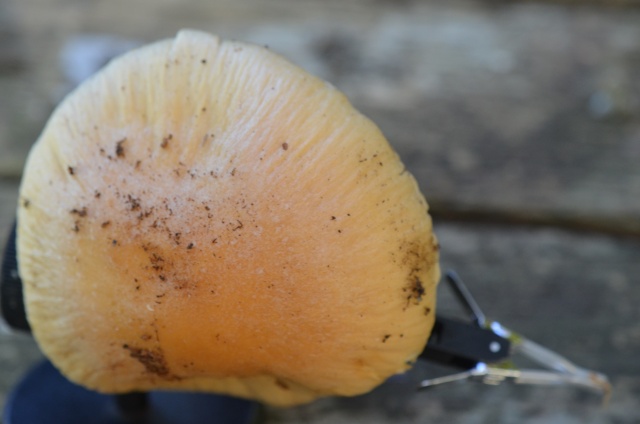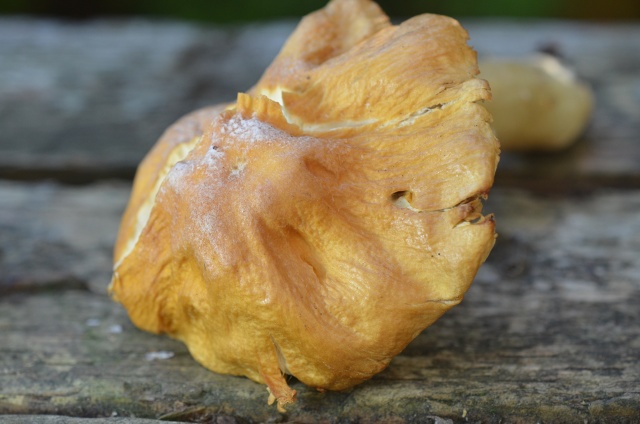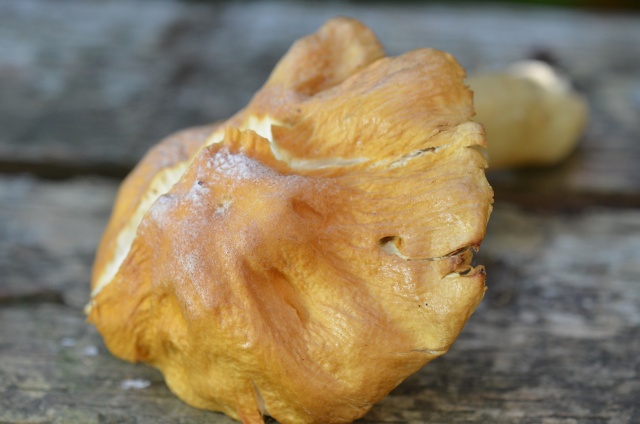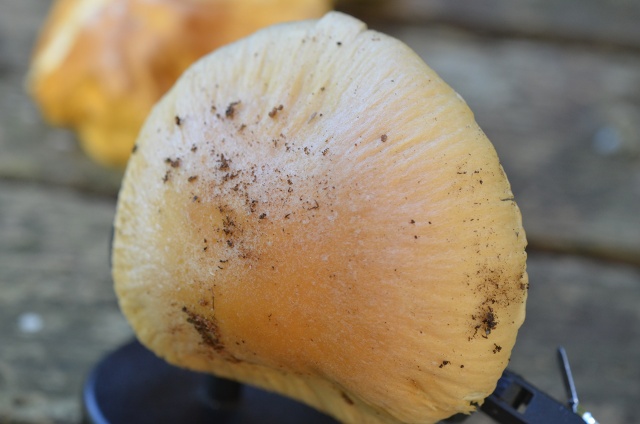The stipe is whitish to creamy or pale yellow and fibrillose,
especially below the ring.
This mushroom has a persistent white membranous ring and a white universal veil that often
leaves a thin whitish coating on the cap and a slight membranous rim
around the base of the stipe (from Mushrooms of the Pacific Northwest)
The stipe or stem s typically 6-12 cm long and 1-2 cm in diameter
over most of its length, is slightly swollen at the base.
The stem surface is white or very pale buff, as is the stem ring
which is initially attached to the rim cap so concealing the young gills.
The ring, which is persistent, is positioned just above the mid point of the stem.
Fine white longitudinal fibres give the upper part of the stem a matt surface, while much larger fibres near the base create an even more shaggy appearance.
(from www.first-nature.com)



